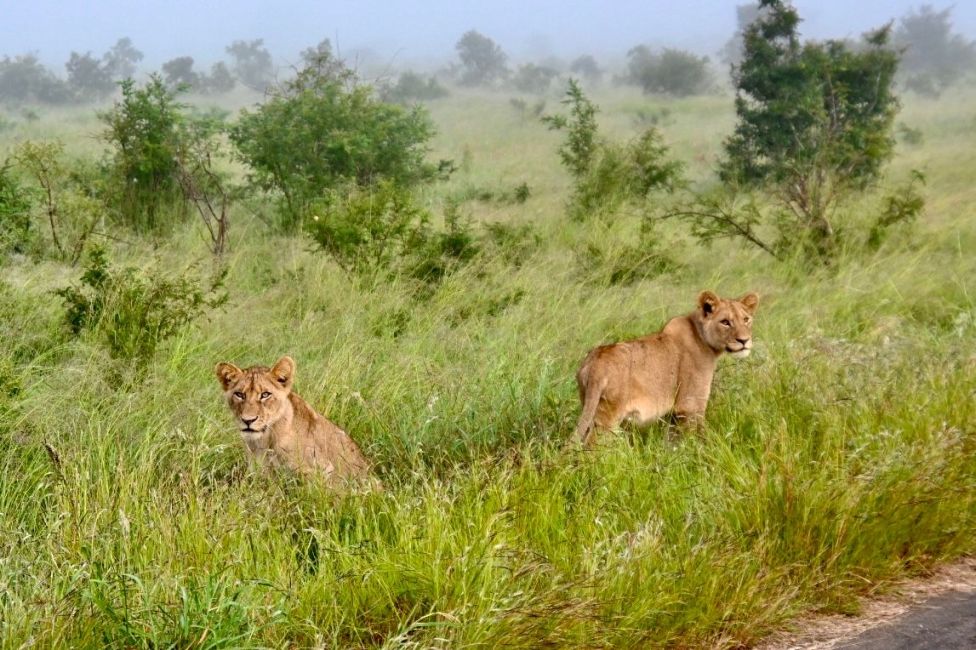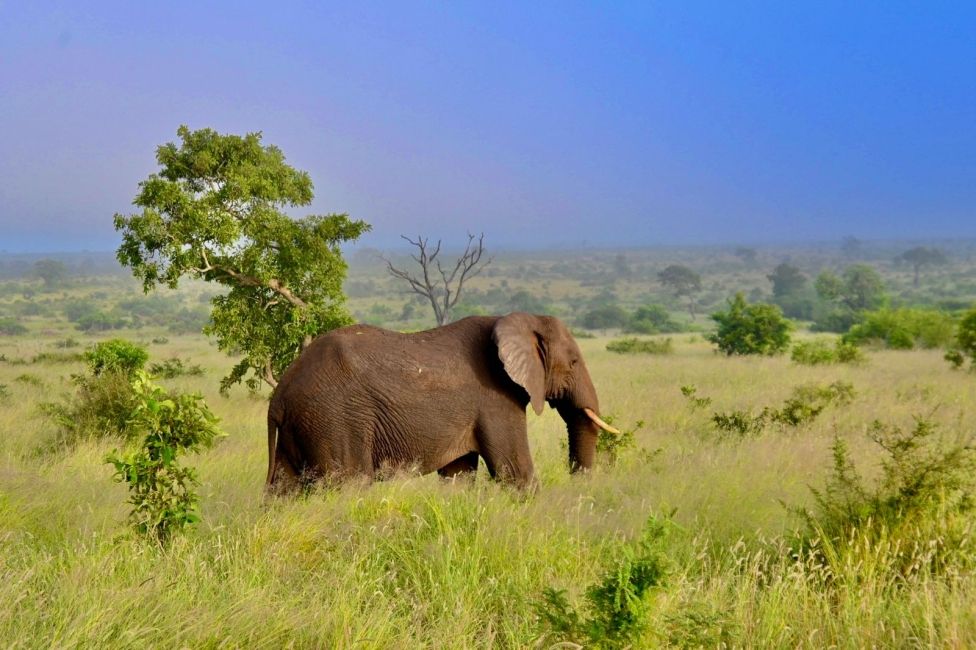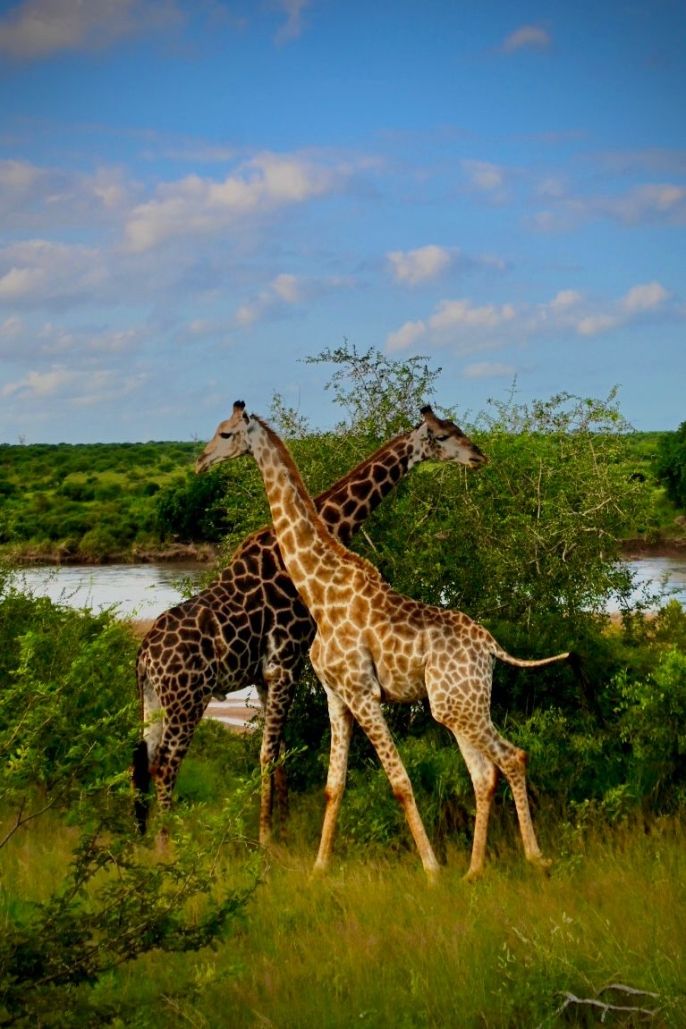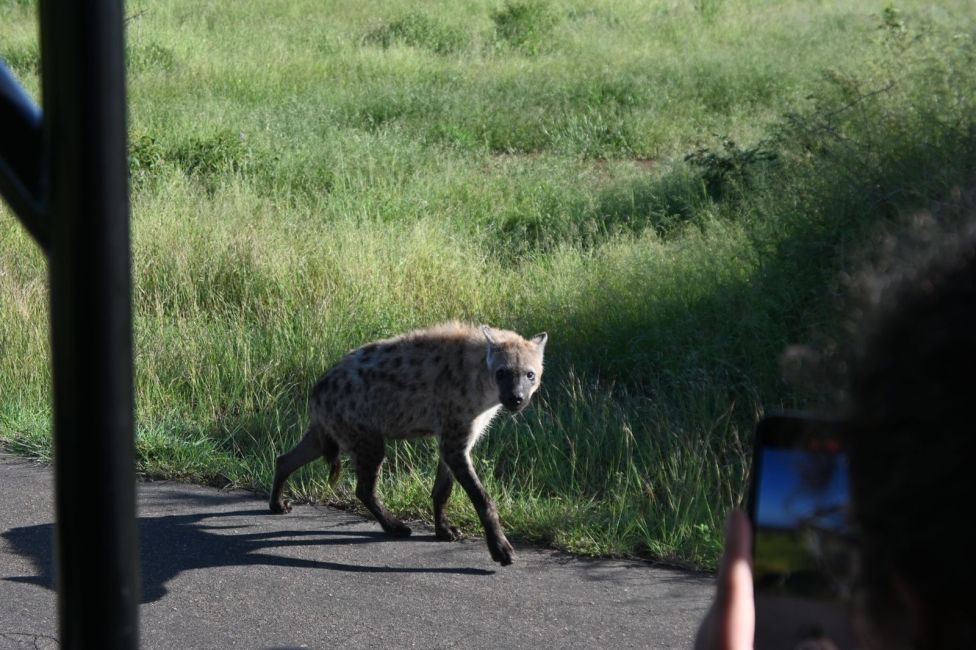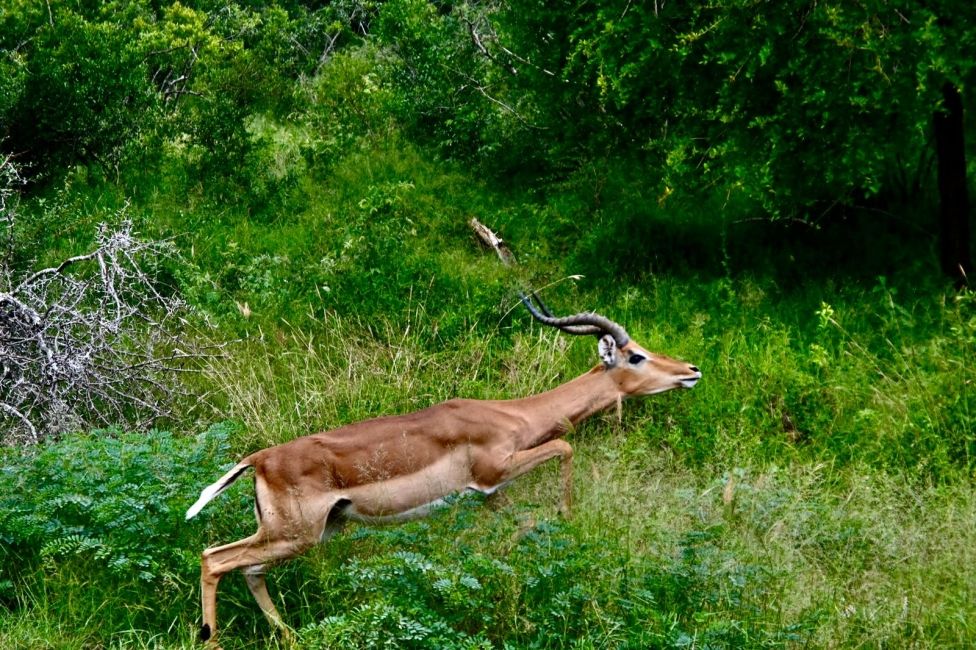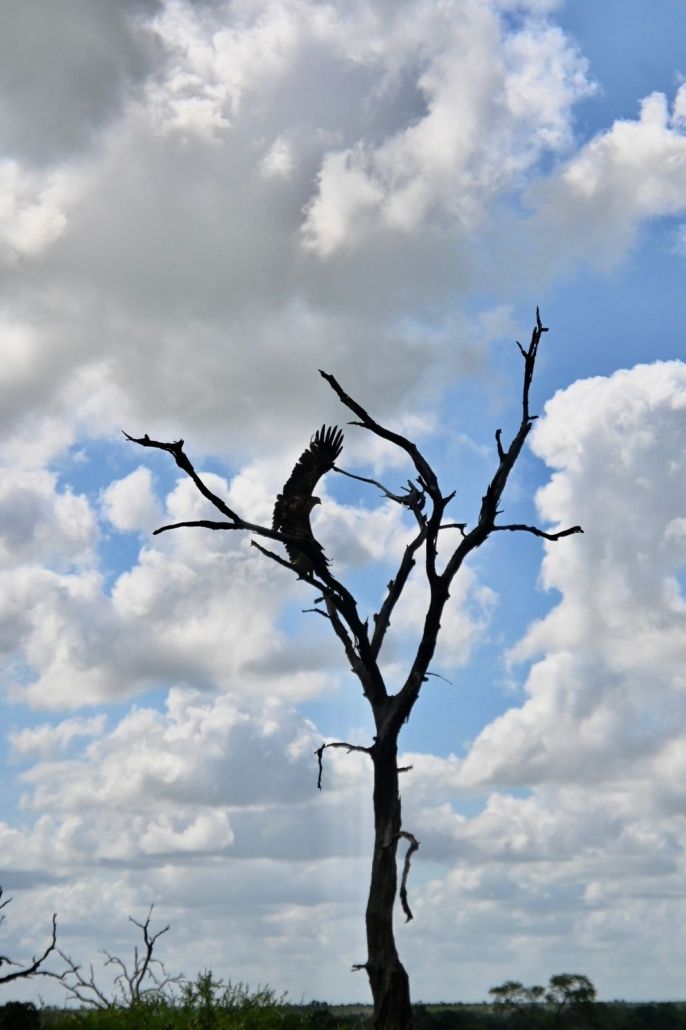Wildlife Sightings on Safari Trip in Kruger National Park
Authored by Heather Wang (she/her)
(Heather is a 2nd-year undergraduate student at Dartmouth College, majoring in Engineering Physics and Philosophy. She hopes to research astronomy and photometry during her time in South Africa, while also interacting with the people and culture. )
The hot dust crept into the insides of our eyelids as we batted them against the dry noon air of Kruger National Park. Our noses are brushed by flying earth and invisible particles from behind a safari bus kicking into high gear. The tips of our hair tickle the skin on our foreheads and cheekbones. The lion is the jewel of the prairie and in our eyes (although we don't mind seeing a faraway sleeping leopard, tucked between two strong branches and the sturdy trunk of a tree, through a pair of binoculars), we got our wish three times: One morning spotting two "Nalas", accompanied by their mother squatting in a bush, once a pair resting on the road's cool asphalt (guess Mufasa and Sarabi took a post-dinner stroll), and one last time the morning of departure, another two pairs on opposite sides of the safari path.
At least, our guides used many references from The Lion King to introduce us to the wild animals. "That's Zazu," they said when we stopped to examine a hornbill with a thin yellow beak, much smaller than that of the animated Zazu. We saw many Pumbas, roaming in the dry yellow grass, and countless elephant herds, feeding giraffes, and leaping impalas. An adorable baby elephant charged between two safari buses, flapping its ears and pouting; a giant elephant almost threw over our bus as it stared us down; and a monkey swooped down from what seemed like the sky to snatch my breakfast toast. He succeeded. There was always an eagle or lilac-breasted roller delicately perched at the very top of a tree, and a mother hyena holding a carcass in her mouth as five cubs crowded around her was among the most magnificent sights I have ever seen.
Nature had penned a thriller for us: Even if we were staying for two nights and barely two days, we got extremely lucky and sighted all the big cats, from lions to leopards to cheetahs. We even saw the African wild dogs, known to be sighted only once a year!
Our role as safari-goers was simply to observe. The imagined scenario of beasts jumping into our open car was unfounded, but for what seems like a quite specific reason. The peace with which humans and animals interacted astounded me so much that I forgot we were face-to-face with wild animals. Sure, you shiver when a skilled hunter enters your sight, but your worries quickly die as a male lion with a fully-grown mane rests merely feet away in the bushes, patiently looking back at us and our cameras. Despite having visited national parks such as Yellowstone in the U.S.A., I have never had the chance to be so close to the animals as I have in Kruger. I never got the feeling that the wildlife were afraid, and the area was very well-preserved, with wild vegetation growing for miles on end. This is what humans should do around the world, but it is not always done.
We also learned numerous fun facts from our guides, like how elephant serotonin levels rise around sunset and they flap their ears to cool down, how they shake off the dirt on vegetation with their trunks before feeding, and how to tell a male zebra from a female. And though waking up at five for the sunrise walks and scouring for eyes that meet our flashlight during night sightings with little results were exhausting, zooming through the endless open prairie with wind blowing through our hair and returning to camp to a freshly-cooked meal around the bonfire were experiences I will relish for life.
I came to know that "safari" is Swahili for "travel,” or “journey.” This trip really hammered home for me that we are all passing travelers of the Earth; the least we can do is to be kind and coexist with the rest of nature in our time.
Related Posts

EAT, DRINK, EXPLORE: CAPE TOWN
BEST FOOD TO EAT IN CAPE TOWN If you’re looking to pinpoint South Africa’s national dish, here’s a helpful tip: there isn’t one. Cape Town’s multi-cultural heritage boasts British, French... keep reading
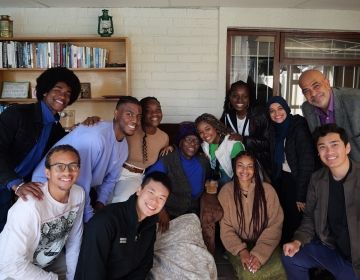
Reflecting on South Africa as a Frederick Douglass Global Fellow
By: Sam Li Stepping off the plane in Cape Town felt like stepping into a whirlwind of vibrant energy, complex history, and breathtaking landscapes. This wasn't just any summer adventure... keep reading
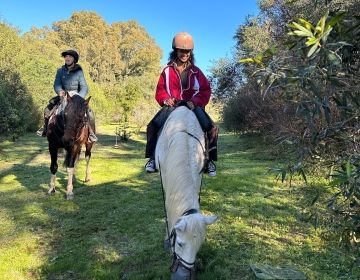
Equestrian Getaway in Cape Town
Authored by Haroni Sahilu (she/her) (Haroni is a rising senior at Arizona State University, majoring in Philosophy and Justice Studies. During her time in Cape Town, she hopes to aid... keep reading
